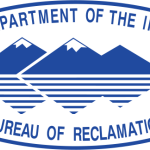- Branche: Government
- Number of terms: 15655
- Number of blossaries: 0
- Company Profile:
A U.S. Department of the Interior agency that oversees water resource management incuding the oversight and operation of numerous diversion, delivery, and storage projects the agency has built throughout the western United States for irrigation, water supply, and attendant hydroelectric power ...
In American archeology, a cultural stage following the earliest known human occupation in the New World (about 5,500 B.C. to A.D. 100). This stage was characterized by a generalized hunting and gathering lifestyle and seasonal movement to take advantage of a variety of resources.
Industry:Engineering
That capacity which a hydrogenerator can deliver without exceeding mechanical safety factors or a nominal temperature rise. In general this is also the nameplate rating except where turbine power under maximum head is insufficient to deliver the nameplate rating of the generator.
Industry:Engineering
A unit of discharge for measurement of a flowing liguid equal to a flow of 1 cubic foot per second (448.8 gallons per minute (gpm), 7.48 gallons per second, or 1.98 acre-feet per day). A rate of streamflow; the volume, in cubic feet, of water passing a reference point in 1 second.
Industry:Engineering
Thermal layering of water in lakes and streams. Lakes usually have three zones of varying temperature, the epilimnion, the metalimnion, and the hypolimnion. The formation of separate layers (of temperature, plant, or animal life) in a lake or reservoir. See thermal stratification.
Industry:Engineering
The condition of containing dissolved or soluble salts. Saline soils are those whose productivity is impaired by high soluble salt content. Saline water is that which would impair production if used to irrigate sensitive crops without adequate leaching to prevent soil salinization.
Industry:Engineering
Computerized power system regulation to maintain scheduled generation within a prescribed area in response to changes in transmission system operational characteristics. The function of dedicated generating capacity changing moment to moment to follow the loads in a defined control.
Industry:Engineering
A location staffed to restrict entry of unauthorized personnel into a risk area during emergency and/or disaster events. Access control is normally performed just outside of the risk area and involves use of vehicles, barricades, or other measures to deny access to a particular area.
Industry:Engineering
Fine-grained soil or the fine-grained portion of soil that can be made to exhibit plasticity (putty-like properties) within a range of moisture contents, and that exhibits considerable strength when air-dry. Plastic soil which passes a No. 200 (0.075 mm) United States Standard sieve.
Industry:Engineering
The fifth of five Early Warning System components consisting of the plans, personnel, equipment, and facilities needed to move the population at risk to safety. It involves taking protective actions to leave an area of risk until the hazard has passed and the area is safe for return.
Industry:Engineering
Tiny, usually microscopic, plants (phytoplankton)and animals (zooplankton) with limited powers of locomotion, usually living free in the water away from substrates. Minute plants and animals floating in bodies of water; often a major source of nutrition for larger aquatic life forms.
Industry:Engineering
